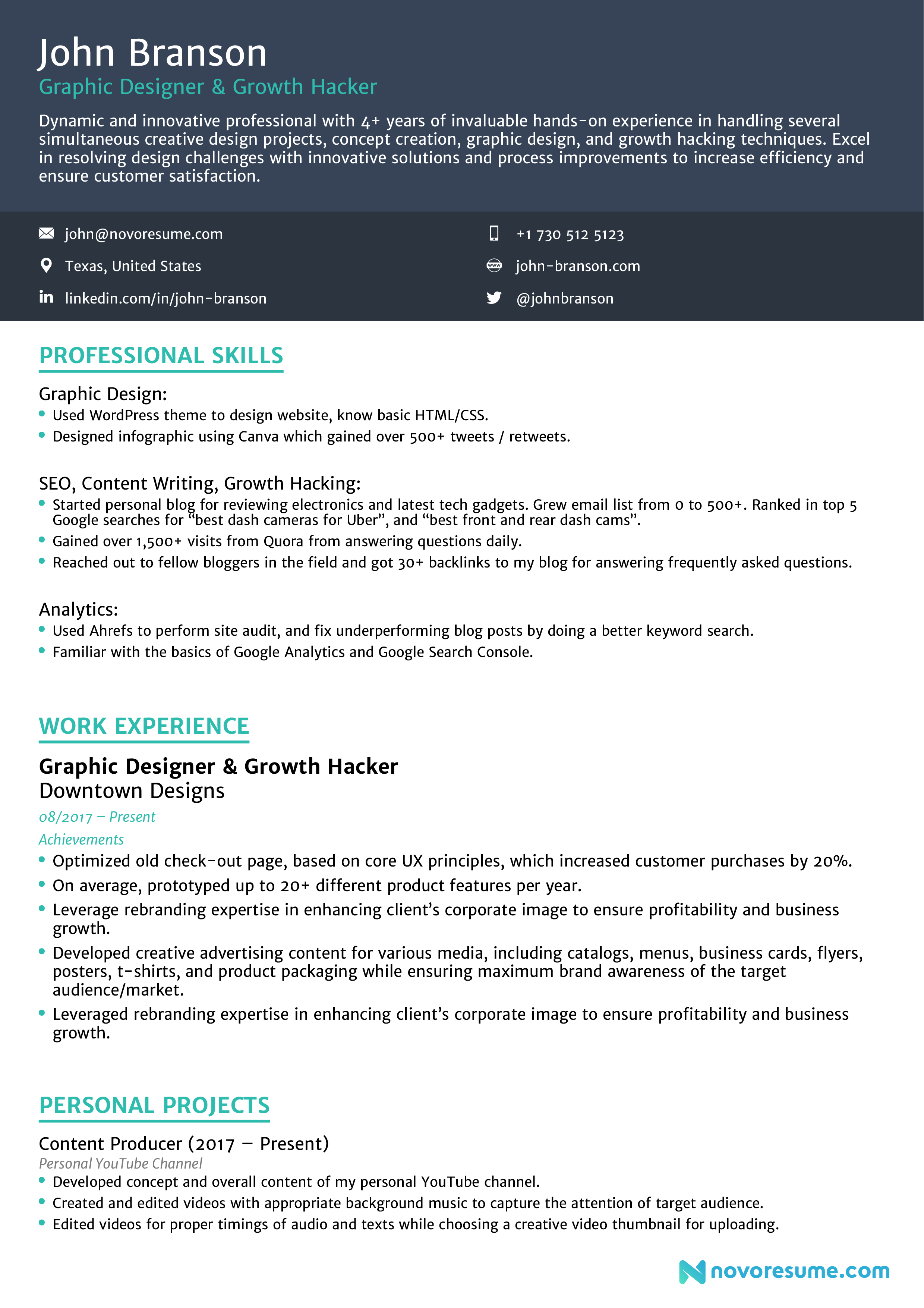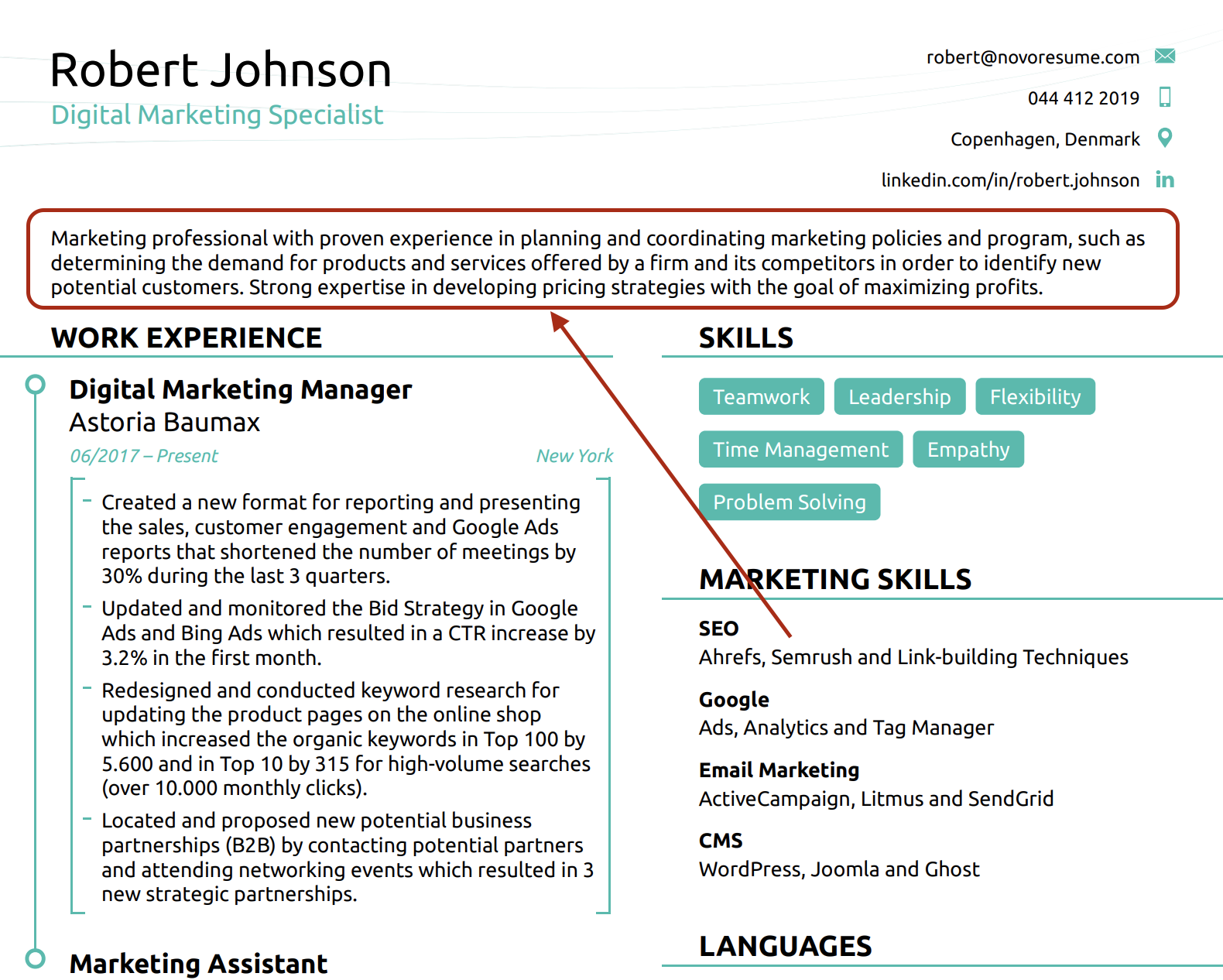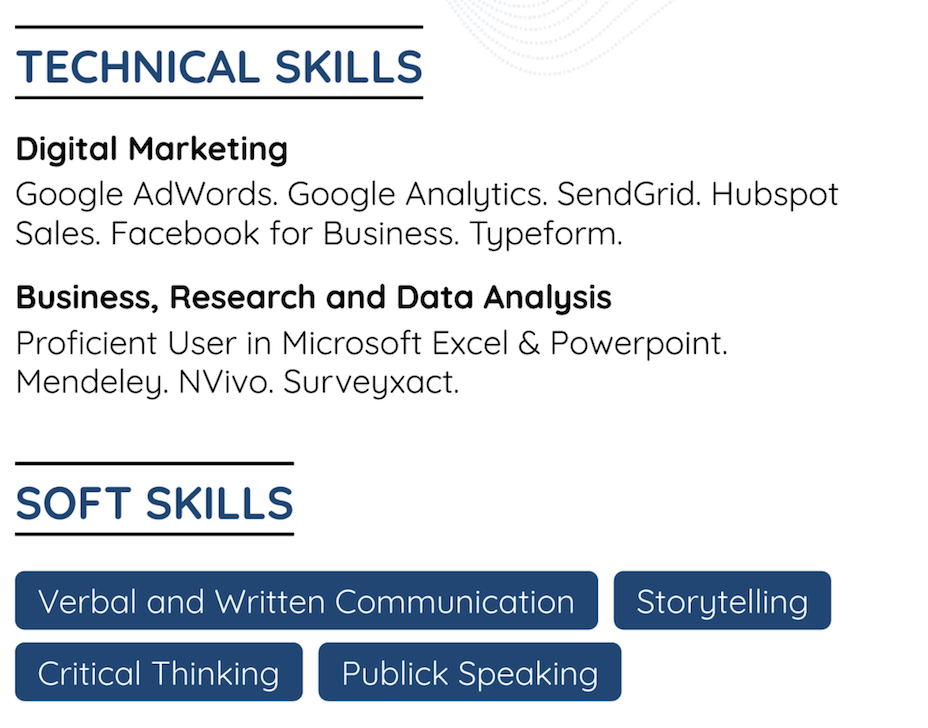Are you in the middle of a career change?
Or maybe you’re a senior professional with a diverse set of skills?
Whichever the case may be, the combination resume might be the right one for you!
This hybrid resume allows you to highlight both your work experience AND skills in a single resume, making your professional background shine!
So, want to learn more?
- What a combination resume is & when to use it
- How to create a hybrid resume that really stands out
- How to write must-have sections for any combination resume
Let’s get started!
What’s a Combination Resume
So, what is a combination resume exactly and what does it combine?
Essentially, a combination resume, aka a hybrid resume, combines 2 traditional resume formats.
It’s a mix of the reverse-chronological resume and the functional resume format.
As in, it places equal emphasis both on your skills and work experience.

The format offers 2 main advantages:
- It allows you to present a quick overview of your actual employment history and the areas that are transferable.
- While at the same time, showing the HR manager your top skills and qualifications.
Keep in mind, though, unless you’re in a very specific situation, the combination resume might not be the right resume format for you. What do we mean?
Read on to find out.
When to Use a Combination Resume
The combination resume is pretty rare.
Most job-seekers worldwide tend to use a reverse-chronological format (and for a good reason). It’s pretty much the standard: HR managers are used to it, it’s straightforward and easy to make.
The combination resume format is very situational. You shouldn’t use it unless you:
- Are going through a career change.
- Have some employment gaps in your work history.
- Are a senior-level candidate, with a diverse range of skills and experiences.
In case you fit the bill for one of these 3 cases, though, here’s how to create a combination resume.
What to Put on a Combination Resume
When creating a combination resume, a proper layout is your best friend.
Typically, you’ll want to cover the following resume sections:
- Contact Information
- Resume Summary
- Work Experience or Areas of Strengths
- Skills Summary
- Additional Skills
- Education
Now, we’ll walk you through each of these sections, and teach you how to write them.
Starting with -
Add Contact Information the Right Way
Let’s start with the basics.
If the HR manager is interested in interviewing you, they’ll want to know how to reach you.
In the contact information section you include:
- First name, last name.
- Phone number - Make sure you include your country code if you’re applying outside your country.
- Email address - Your email should be professional. Ideally, something like [FirstName][LastName]@gmail.com
- Location - Are you located in the area? Open to relocation? Or maybe you’re looking for a relocation sponsor? Make sure it’s clear.
- Title - Your professional title goes here. Either your current job or the one you’re applying for word-for-word. If you’re switching careers, you could also do something like “Aspiring [Desired Job Title]”
Once done, make sure you double-check everything, slowly and carefully, for any typos.
We’d recommend reading everything out loud just in case. You’re not going to go far if the recruiter can’t get in touch with you because of a typo in your email.
Got the basics down? Good!
Now, let’s move onto the resume summary.
Grab the Recruiter’s Attention With a Resume Summary

A resume summary is a 2 - 5 sentence summary of your professional background.
You should look at the resume summary as an introduction to your resume.
It’s the first thing the recruiter sees on your resume, and if you fail to catch their attention, they’re not going to read the rest of it.
So, how do you write a good resume summary?
You mention things like:
- Career highlights
- Qualifications
- Top achievements
- Relevant skills
Here’s an example to better understand what that might look like.
- “IT project manager with a proven track record of working with agile and waterfall methodologies. Managed teams of 5+ people on software development projects over the last 4 years. Decent understanding of JavaScript, React, and Python.”
PS - Need more inspiration for writing a strong resume summary? Check out our how-to guide with 40+ resume summary examples.
Use Your Work Experience to Show Off Relevant Skills
The next section in your combination resume is the work experience.
The work experience section is where you get to really sell yourself and brag about your past achievements.
List out your work history in a reverse-chronological order (starting from the most recent and ending with the oldest), and mention the standard things like:
- Job title and position
- Company name, location - If the company isn’t famous, you can describe what they do in 1-2 sentences. And you should always mention the location too.
- Period of employment - The standard format is mm/yyyy - mm/yyyy.
- Achievements or responsibilities - With achievements, you should list any specific changes you made happen (think in terms of numbers and data). Though, if that’s not possible because of the nature of the job (e.g. cashier), you can just stick to responsibilities.
Sounds simple enough, right?
A couple of other things you should keep in mind when writing a work experience entry:
- When possible, focus on achievements instead of responsibilities.
- Back up your experiences with numbers and data.
- Tailor your experience to the job you’re applying for.
Now, here’s what a work experience entry looks like in practice:
Web Developer
Company X, Denmark, Copenhagen, 05/2018 - Present
- Full-stack developer, responsible for web applications and creative cloud engineering. Led a team of 5+ junior developers, using different methodologies.
- Optimized old check-out page, based on core UX principles, which increased customer purchases by 20%.
- On average, prototyped up to 20+ different product features per year.
Here’s what’s done right:
- Information is relevant, and straight to the point.
- It’s backed up by data and numbers.
- It lists achievements over daily responsibilities.
Now, compare that to -
Web Developer
Company X, Denmark, Copenhagen, 05/2016 - 07/2019
- Collaborated with project managers and provided updates.
- Designed website and mobile apps, while providing exceptional user experience.
- Worked with other developers in a team.
That’s extremely vague, right?
It doesn’t really say anything, or HOW the person actually did their job.
Now, imagine you’re the HR manager and you get to pick between these 2 candidates.
Which one would you pick?
Exactly!
- Going through a career change? You might want to use your work experience section to highlight your transferable skills.
- This way, you’re showing how your seemingly irrelevant work experience gave you the skills you need to do the new job right.
Show You’re the Right Person With the Skills Summary Section
The skills summary section is what differentiates the combination resume from the reverse-chronological one.
This is where you show your know-how for the job and that you have the right skills for it.
This section is especially useful for career changers, as it allows you to focus more on your skills (as opposed to work experience).
So, how do you write a skills summary section?
You start by listing all the required skills for the job you’re applying for.
For example:
- SEO, Content Writing, Growth Hacking
- Graphic Design
- Analytics
Then, underneath each skill listing, you describe how you’ve used this skill in the past.
Like so:
Combination Resume Skills Summary Example
- Started personal blog for reviewing electronics and latest tech gadgets. Grew email list from 0 to 500+. Ranked in top 5 Google searches for “best dash cameras for Uber”, and “best front and rear dash cams”.
- Gained over 1,500+ visits from Quora from answering questions daily.
- Reached out to fellow bloggers in the field and got 30+ backlinks to my blog for answering frequently asked questions.
- Used WordPress theme to design website, know basic HTML/CSS.
- Designed infographic using Adobe Illustrator which gained over 500+ tweets / retweets.
- Used Ahrefs to perform site audit, and fix underperforming blog posts by doing a better keyword search.
- Familiar with the basics of Google Analytics and Google Search Console.
Not bad, right?
But what if you’re not switching careers, do you still include the skills summary section?
Yep!
In that case, you’re using a skills summary section to show your vast range of skills and know-how (that your experience section can’t cover).
If you’re an experienced candidate, your main skills probably don’t stop there.
And that brings us to the next section of your combination resume.
Additional Skills for a Combination Resume

Remember how in the previous section (skills summary), we mentioned the must-have skills?
Well, this is where you list everything you left out.
Now, all you have to do is scan a job ad you want to apply for, look for all the essential skills that you didn’t mention in the skills summary section, and mention them in this section.
Let’s take a look at an example...
Combination Resume Skills Example
Let’s assume that the job is looking for a designer who has:
- Proficiency in UX software (Sketch, InVision, Photoshop XD, etc.).
- Basic understanding of HTML, CSS.
- Strong problem-solving, project management and organizational skills.
- Good communication skills and is a team player.
Now, all you’d have to do is mention those requirements in your skills section, like so:
- HTML and CSS.
- UX / UI software (Sketch, InVision, Photoshop XD, Figma).
- Verbal and written communication.
- Teamwork and time management.
Wondering what other skills are essential for your job? Check out our full guide of 150+ must-have skills for any resume.
Now that you know how to get the skill section right, let’s move on to the next section - education.
Write an Education Section That Stands Out
Your education section comes last on a combination resume, but luckily, it’s fairly straightforward.
The section is pretty much a requirement for any resume.
Here’s what you include in your education section:
- Type of degree - e.g. MSc in Economics and Business Administration
- Educational institution name - The University of Chicago
- Years attended - 09/2017 - 06/2019
- Program location (optional) - Chicago, Illinois
- GPA (optional, only if noteworthy) - 3.87
- Relevant courses (optional) - Project Management Principles and Practices
- Exchange program (or any other noteworthy achievements) - Exchange program in Washington, D.C.
Here’s what the full listing might look like for a combination resume:

Now, what if your degree isn’t relevant to the job you’re applying for, as it might be if you’re switching careers?
Do you still list it?
Yes!
As long as you have an actual degree, it still says a lot about your passion and commitment to education.
In some cases, you can even show off some transferable skills with your degree.
Let’s take a look at another example and say you’re applying for a graphic design job, with a B.A. in Communication:
B.A. in Communications
University X, 10/2013 - 06/2017
GPA: 3.7
- Excelled in visual communication and digital media classes.
- Designed posters for university events and social media content.
Key Takeaways
To recap, a combination resume is a type of resume format that places equal emphasis on your skills and work experience.
To make sure your hybrid resume is exceptional, here’s what you should keep in mind:
- Make sure you cover all the necessary sections for a combo resume: contact information, resume summary, skills summary, additional skills, and education.
- When listing your qualifications, focus on only what’s relevant.
- Finally, end with your education. Even if your degree isn't relevant to the job, you should still include it to show your passion for learning.
Done with your resume and looking for extra career advice? Be sure to check out our career blog for more actionable advice and insights.

